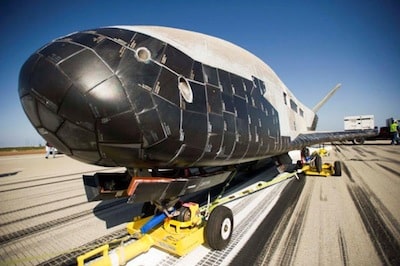Aviation
Secretive X-37B space plane lands after 2 years

A secretive military space plane landed Friday in California after nearly two years in space.
The unpiloted X-37B Orbital Test Vehicle touched down at Vandenberg Air Force Base at 12:24 p.m. ET, concluding a mission that launched from Cape Canaveral on Dec. 11, 2012. That’s 674 days.”The landing of OTV-3 marks a hallmark event for the program,” says an Air Force press release, quoting an unnamed X-37B program manager. “The mission is our longest to date and we’re pleased with the incremental progress we’ve seen in our testing of the reusable space plane.”The flight was the third by a Boeing-built X-37B since 2010, totaling 1,367 days.
This Fighter jet was buried in Iraq desert ..!(Opens in a new browser tab)
In low Earth orbit. It was the first repeat flight by one of the two reusable vehicles. The first mission lasted 224 days, the second 469 days.The experimental spacecraft — whose operations are expected to move to the Kennedy Space Center — are about a quarter the size of a space shuttle, measuring 29 feet long with a 15-foot wingspan and a payload bay the size of a pickup truck bed. They have launched atop United Launch Alliance’s Atlas V rocket. Run by the Air Force Rapid Capabilities Office, the program has taken over two former shuttle hangars at KSC, where renovations are expected to be completed by the end of this year. That would allow the vehicles to be processed near their launch site, with future landings possible on KSC’s 3-mile shuttle runway. Doors on one of the hangars, Orbiter Processing Facility-1, already brand the site as “Home of the X-37B.” The program’s budget and missions are classified.The Air Force says it is performing “risk reduction, experimentation and concept of operations development for reusable space vehicle technologies.”The Secure World Foundation says there’s a good chance the space plane serves as a platform for testing sensors for intelligence collection, but no chance it is a weapon system, as some have speculated.
Report Courtesy : USA TODAY









